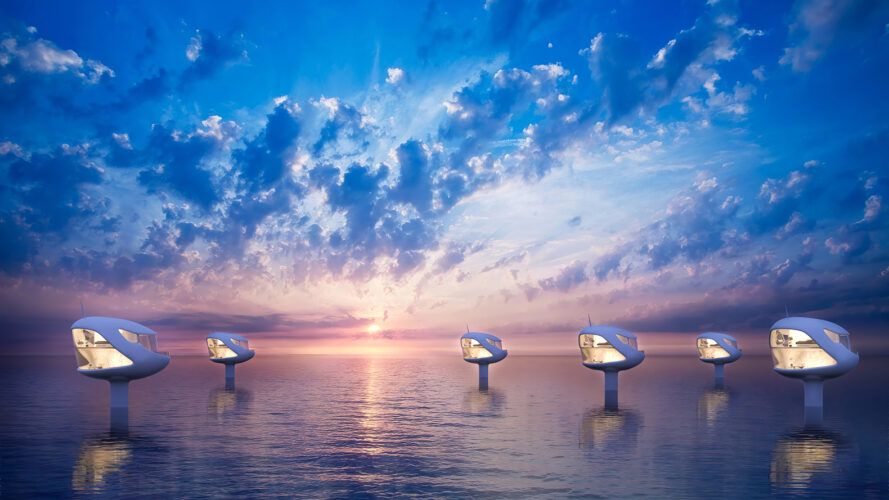
SeaPods create an exciting way to waterfront living
Ocean Builders is creating a new way to live on oceanfront real estate — right in the middle of the water. SeaPods are small homes that rest on a floating steel and concrete foundation just off the coast of a mainland area. Situated 7.5 feet above the waves, these 833 square-foot single bedroom homes can fit two residents or two overnight guests.
Continue reading below
Our Featured Videos

“We live on a world of water. This is our vision of the paradise this water world could be. You are welcome to join us,” the designers said. The SeaPods are currently built in Panama. They are designed to be installed all over coastal areas to create new real estate options for vacation rentals or long-term small homes.
Related: These eco-pods are setting a new standard for remote space

The first prototype for these floating homes were launched in February of 2019. They stand for economy, eco-friendly and eco-restorative in their rain harvesting roof and economical single-level floor plan. As a result, aiming to keep sustainable living within the price range for the ordinary buyer.

The EcoPod and SeaPod have different shapes and layout, but they sit on a steel pole with three floating anchor points on all sides to balance the structure. The original SeaPod is 11.6 meters long and has 1250 square feet of storage to go with the 833 square feet of living space. This may sound tiny for a living space, but SeaPods actually have three floors. A full 548 square feet of surface is used for windows, so these homes are guaranteed to have unbelievable ocean views.
Additionally, The SeaPods can store 1400 liters of water, and the exterior is made of fiberglass, gel coat and foam. Think of it like an anchored boat offshore. Ocean Builders uses 1,688 cubic feet of air-filled steel tubes to create a buoy-type structure that pushes a SeaPod up three meters above the water level.

Living in a SeaPod also gives you the option of going snorkeling, boating or exploring the ocean around you in other ways. Ocean Builders say they created this new form of home partially for the lifestyle, but partially because you don’t clear trees away when placing a home on the ocean surface like you do if you build on land.
“When you build a home on the water you actually create a habit for ocean life to thrive. SeaPods are what marine biologists call ‘fish aggregation devices,’” the designers explained. “This means that anytime you put something in the water that makes shade it attracts sea life. It often starts with barnacles and other life starts to grow on the underwater surface of your Pods. This can lead to coral grow and eventually homes for fish.”

Furthermore, waste will be incinerated into non-toxic ash. Waste heat from incineration will be used to make hot water for showers and sinks. Liquid from toilets will go to blackwater storage for treatment or removal. SeaPods also have “endless showers.” The homes source their own water by desalinating seawater and recycling water for up to 90% reuse. In partnership with ShowerLoop, Ocean Builders are working toward reducing shower water consumption by 90% by using a continuous active three-step water filtration process.

SeaPods even include a four-person jacuzzi bath spa with massage jets, a skylight, mood lighting and a sound system. These smart homes can be run by an owner-specific smart ring, and they have wireless charging pad stations built into surfaces around the home that are indicated with lights. Furthermore, SeaPods are designed without radio waves except for optional Wi-Fi that you can replace with the installed ethernet cables.

These pods may make the most sense for areas where real estate off coastal areas aren’t in dispute, and where wave height won’t disrupt the homes. We’re thinking the tropics around the equator. It’s also possible that these homes might be installed and stored seasonally for other locations.
